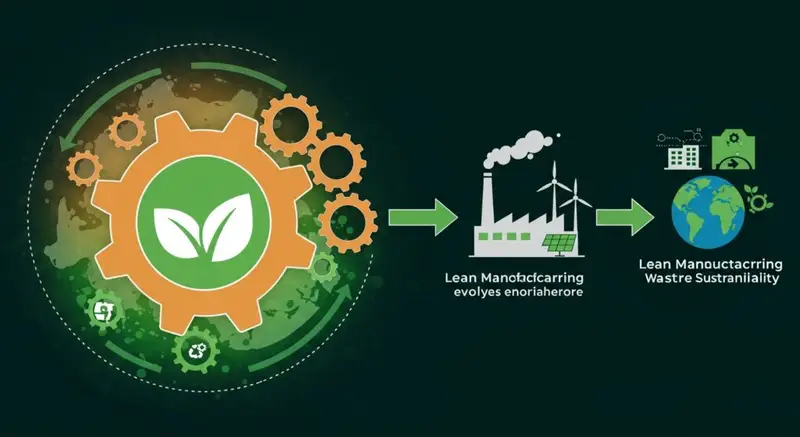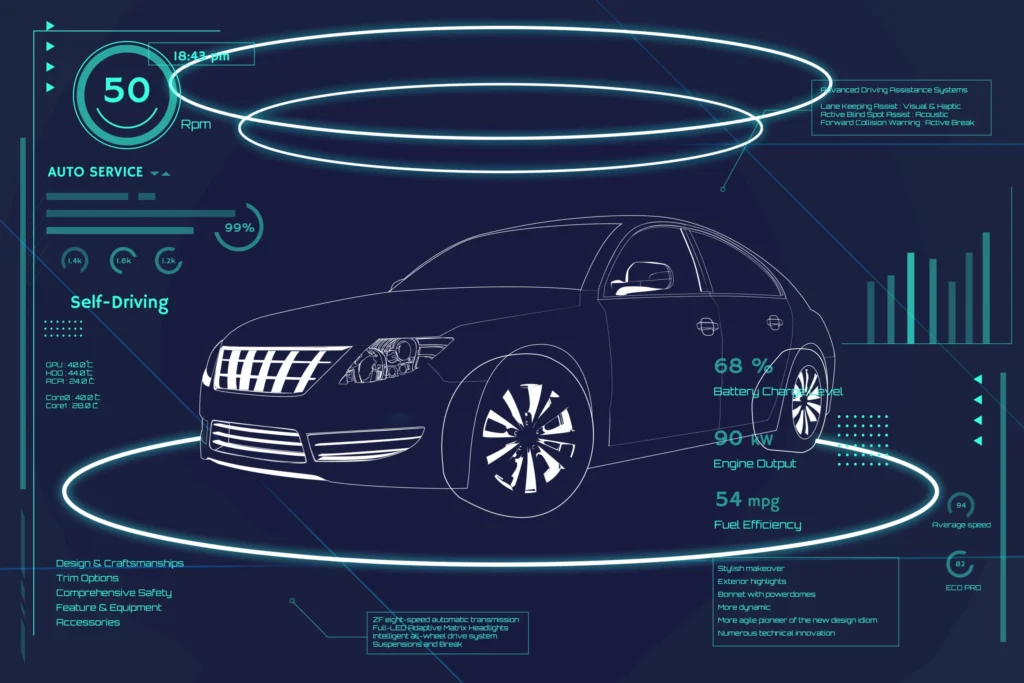From Lean to Green: Integrating Sustainability into Continuous Improvement
In an increasingly environmentally conscious world, the imperative for businesses to adopt sustainable practices has never been stronger. For decades, lean manufacturing has been the cornerstone of operational efficiency, focusing on eliminating waste and maximizing value. However, the traditional lean approach, while incredibly effective, often overlooked the environmental impact of its processes. The good news is that these two powerful philosophies are not mutually exclusive; in fact, they can be powerfully integrated. This article explores how organizations can transition ‘From Lean to Green,’ seamlessly weaving sustainability into their continuous improvement efforts to achieve not just operational excellence but also environmental stewardship.
Table of Contents
- The Evolution of Lean Manufacturing: From Efficiency to Eco-Efficiency
- Bridging the Gap: How to Integrate Sustainability into Lean Manufacturing
- Practical Steps for a Green Lean Transformation
- Overcoming Challenges and Measuring Success
- The Future of Continuous Improvement: A Sustainable Lean Approach
The Evolution of Lean Manufacturing: From Efficiency to Eco-Efficiency
Originally pioneered by Toyota, lean manufacturing revolutionized production by systematically identifying and eliminating waste (Muda) to improve process flow and deliver maximum value to customers. Its focus areas include overproduction, waiting, unnecessary transport, over-processing, excess inventory, unnecessary motion, and defects. While these principles deliver significant economic benefits, they historically didn’t explicitly account for ecological waste.
Understanding Lean’s Core Principles
At its heart, lean is about continuous improvement (Kaizen) and respect for people. It seeks to create more value for customers with fewer resources. This philosophy is inherently aligned with sustainability goals, as reducing waste in any form conserves resources. However, the traditional definition of waste primarily focused on financial and operational inefficiencies.
Why Sustainability Matters Now More Than Ever
The global climate crisis, dwindling natural resources, and increasing consumer demand for eco-friendly products have pushed sustainability to the forefront of corporate strategy. Companies are now pressured by regulations, investors, and customers to not only be profitable but also responsible. Integrating sustainability into continuous improvement, particularly within lean manufacturing, offers a pathway to meet these demands while enhancing competitiveness.
Bridging the Gap: How to Integrate Sustainability into Lean Manufacturing
The integration of sustainability into lean manufacturing, often termed “Green Lean,” involves expanding the definition of waste to include environmental impacts. This means not only optimizing for efficiency but also for ecological footprints.
Value Stream Mapping for Environmental Impact
Value stream mapping (VSM), a core lean tool, can be adapted to identify environmental hotspots. By mapping material flows, energy consumption, and waste generation alongside traditional process steps, companies can pinpoint where the most significant environmental impacts occur. This allows for targeted improvements, such as reducing energy usage in high-consumption steps or minimizing hazardous waste generation. For more insights into sustainable supply chains, you might visit the EPA’s sustainability resources.
Waste Reduction (Muda) and Resource Efficiency
The seven wastes of lean can be reinterpreted through an environmental lens:
- Overproduction: Leads to excess energy, material use, and potential obsolescence.
- Waiting: Can signify energy left on (machines idling) or resources tied up.
- Transport: Consumes fuel, generates emissions, and increases accident risk.
- Over-processing: Uses more energy, water, and materials than necessary.
- Excess Inventory: Requires storage space, climate control (energy), and risks spoilage/obsolescence.
- Unnecessary Motion: Less direct environmental impact, but can lead to energy inefficiency in facility design.
- Defects: Result in wasted materials, energy for rework, and disposal costs.
Expanding on these, an eighth waste, ‘underutilized talent’, can also be linked to sustainability by not leveraging employees’ ideas for green initiatives. For further reading on related topics, explore our article on Achieving Operational Excellence.
Practical Steps for a Green Lean Transformation
Embarking on a Green Lean journey requires a structured approach and commitment from all levels of an organization.
Establishing Baselines and Setting Goals
Before making changes, it’s crucial to understand your current environmental performance. This involves measuring energy consumption, water usage, waste generation, and carbon emissions. Based on these baselines, set specific, measurable, achievable, relevant, and time-bound (SMART) goals for environmental improvement. For example, “Reduce energy consumption by 15% in the assembly line within 12 months.”
Engaging Employees and Fostering a Culture of Sustainability
Just as with traditional lean, employee engagement is vital. Educate staff on the environmental impact of their work and empower them to identify and implement green improvements. Create cross-functional teams dedicated to sustainability projects and recognize achievements to foster a culture where environmental responsibility is a shared value.
Comparing Traditional Lean vs. Green Lean Focus
| Aspect | Traditional Lean Focus | Green Lean Focus |
|---|---|---|
| Primary Goal | Cost Reduction, Efficiency | Cost Reduction, Efficiency, Environmental Impact Reduction |
| Definition of Waste (Muda) | Non-value-adding activities (operational) | Operational waste + Environmental waste (emissions, pollution, resource depletion) |
| Key Metrics | Cycle Time, Throughput, Inventory | Cycle Time, Throughput, Energy Use, Water Consumption, CO2 Emissions, Waste Volume |
| Tools & Techniques | VSM, 5S, Kaizen, Kanban | VSM (eco-enhanced), 5S (eco-friendly), Green Kaizen, Life Cycle Assessment |
| Scope | Internal operational processes | Internal processes + Supply Chain environmental footprint |
Overcoming Challenges and Measuring Success
Implementing Green Lean is not without its hurdles. Initial investment costs, lack of awareness, and resistance to change can be significant. However, the long-term benefits often outweigh these challenges.
Common Hurdles in Green Lean Implementation
One common challenge is the perceived trade-off between cost and environmental benefit. Often, sustainable practices are seen as an added expense rather than a source of long-term savings and competitive advantage. Overcoming this requires clear communication of the business case for Green Lean, including potential for reduced operating costs, improved brand image, and compliance benefits.
Key Performance Indicators for Sustainable Lean Manufacturing
To measure success, establish KPIs that track both operational and environmental performance. These might include: energy intensity (energy per unit of production), water intensity, waste diversion rates, carbon footprint per product, and supplier sustainability ratings. Regular monitoring and reporting of these KPIs are essential for continuous improvement and demonstrating progress.
The Future of Continuous Improvement: A Sustainable Lean Approach
The integration of sustainability into continuous improvement is not just a trend; it’s the future of responsible and resilient business operations. By adopting a Green Lean philosophy, companies can achieve unparalleled efficiency, reduce their environmental footprint, and build a more sustainable future. This holistic approach ensures that profitability and planet protection go hand-in-hand, creating lasting value for all stakeholders.


